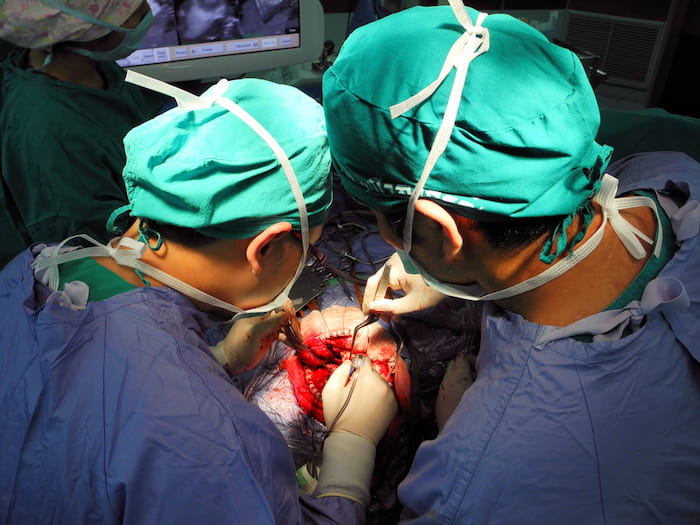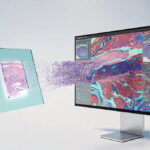Brain surgery is critical to repairing the brain’s structural problems or functional abnormalities. Furthermore, it’s a complicated and delicate process. Thus, a brain surgeon needs to determine whether or not you need to have one.
You may need to see a brain surgeon for neurological surgery for various reasons. For instance, a head injury can build pressure in the brain or result in bleeding and blood clotting. In addition, brain tumors, aneurysms, strokes, and skull fractures can also necessitate brain surgery. As such, it would be best to see your local neurosurgeon for proper diagnosis and treatment.
The type of brain surgery can depend on the condition you’re experiencing. In addition, you can be under anesthesia or awake, depending on the type of surgery you’re undergoing. Neurosurgeons can perform one of the below brain surgeries after thorough consultation and diagnosis.
1- Neuroendoscopy
Neuroendoscopy is one of the minimally invasive surgery techniques which neurosurgeons use. Essentially, this technique allows brain surgeons to inspect and perform procedures on hidden parts of your brain. To access such parts, surgeons use an endoscope through small incisions in the skull. Alternatively, they can thread the thin tube through the nose or mouth, resulting in minimal disruption to the surrounding tissues.
Notably, an endoscope contains a high-resolution camera and a light. Moreover, neurosurgeons can place surgical tools through it, allowing them to successfully perform this minimally invasive surgical procedure.
Various reasons may necessitate you to undergo neuroendoscopy. For instance, doctors may need to remove tumors or lesions on or near the pituitary gland. The gland is behind the bridge of the nose. Therefore, they can insert an endoscope through the nose. Other conditions that can require neuroendoscopy can include ventricular and pineal region tumors. Similarly, this procedure can be crucial when removing Rathke cleft cysts.
A neurologist may order a neuroendoscopy for patients with hydrocephalus and intraventricular hemorrhage. This process may be used to create an opening (fenestration) in the floor of the third ventricle or remove obstructive structures to relieve the fluid buildup in patients with such conditions.
Neuroendoscopy evacuates blood clots or removes sources of bleeding within the ventricular system following a hemorrhagic stroke or other causes of intraventricular bleeding. The same holds true with Chiari malformation, a condition where the lower part of the brain, called the cerebellar tonsils, extends into the spinal canal.
Once successfully done, recovery from neuroendoscopy significantly varies depending on the part of the brain the surgery. Sometimes, doctors may need to observe you for one or two days and discharge you depending on your condition. In addition, they would usually recommend avoiding heavy exercises or lifting for the first few weeks.
2- Deep Brain Stimulation
Deep brain stimulation (DBS) is an elective brain surgery that involves implanting electrodes into some regions of your brain. Like the heart’s pacemaker, neurosurgeons consider DBS a surgical intervention that helps treat patients with various movement disorders.
For instance, patients with epilepsy, Parkinson’s disease, essential tremors, and dystonia can undergo deep brain stimulation. Additionally, you might also undergo DBS if you have obsessive-compulsive disorder. But it’s a procedure doctors recommend last. Thus, they may need to determine that other medications haven’t been effective in maintaining the quality of life of a patient.
To perform this procedure, doctors will use neuroimaging to identify the section of your brain to place the electrodes. After that, they’ll implant these electrodes through surgical incisions. Additionally, they’ll run wires connecting to the electrode through your skin to an internal pulse generator. Generally, surgeons would place the pulse generator under your skin in the upper chest, near the collarbone.
Surgery for a DBS can be done on one or both sides of your brain, depending on your symptoms. But note that the effects are reversible. Furthermore, the doctors can customize each DBS according to a patient’s clinical status.
Consequently, the doctors can program the pulse generator using a unique remote control. They can customize the stimulator or program it automatically or manually according to your condition. This way, you can turn it on and off, depending on the doctor’s recommendations. Although, it can take several months to get the optimum setting specific to your condition.
Throughout this process, a neurologist plays an essential role, overseeing initial evaluations and collaborating with neurosurgeons. They help in selecting candidates, optimizing device settings, and monitoring and adjusting the pulse generator post-surgery to ensure effective treatment.

3- Biopsy
You can undergo various diagnostic procedures when you visit a neurosurgeon. But, one necessary procedure is neuroimaging, like magnetic resonance imaging (MRI) which can help detect if you have irregular tissues or masses in your brain. As a result, doctors can determine if you need to undergo a biopsy.
A biopsy is a surgical procedure to remove tissues or cell samples from the brain for further testing. During the process, neurosurgeons will make an incision on the skull to remove the tissue samples. Alternatively, they can insert a needle by performing a stereotactic needle biopsy.
As a result, a biopsy can help determine if you have cancerous cells in your brain or another condition. Furthermore, if the cells are cancerous, a biopsy can help indicate their origin and how aggressive it is. Thus, it can be crucial to determining the course of treatment.
In certain neuromuscular disorders, such as myositis, a biopsy may be performed to evaluate the specific abnormalities in the tissue. This helps in confirming the diagnosis and guiding treatment decisions.
When an infectious process involving the nervous system is suspected, such as a brain abscess or certain types of meningitis, the biopsy will identify the causative organism and guide targeted antimicrobial therapy.
Typically, doctors can recommend a biopsy after examining your MRI results. Alternatively, they may recommend it if you exhibit particular signs and symptoms.
A biopsy decision also factors in the patient’s medical history, clinical symptoms, and diagnostic test results. The neurologist will then assess the risks and benefits of the procedure and consider it in consultation with other specialists, such as neurosurgeons or neuropathologists. Said professionals make up the teams that interpret the results.
4- Craniotomy
A craniotomy procedure involves removing part of your skull bone to access a section of the brain. This procedure is also known as open brain surgery. It’s important to note that craniotomy is temporary compared to craniectomy. In craniotomy, the doctors put back the bone. However, in craniectomy, the bone isn’t replaced.
The location of the craniotomy can determine the terms your doctors will use to describe the procedure. For instance, they can say frontal craniotomy if the surgery will be performed on the frontal part of your skull. Other terms you might encounter include temporal for the sides or occipital for the back of the head.
Additionally, the size of the skull bone to remove can depend on the condition. Moreover, it also depends on what other procedures neurosurgeons will need to perform inside the skull. Thus, craniotomies can vary considerably. For instance, you can undergo a keyhole craniotomy or burr hole craniotomy. A keyhole craniotomy is a minimally invasive procedure and allows surgeons to see a wide brain area through a small incision. On the other hand, a burr hole is the smallest of craniotomy procedures.
Various conditions can also necessitate a craniotomy. For instance, neurosurgeons can perform a craniotomy before a biopsy or a DBS. Additionally, they can perform a craniotomy to treat various abnormalities like hematoma, brain abscess, epilepsy, or aneurysm. Moreover, craniotomy is also a necessary procedure for removing brain tumors.
Recovery from a craniotomy procedure can be considerably longer than other brain surgeries. You might stay in the hospital for a more extended period. Furthermore, doctors may need to monitor your condition for such complications as seizures and brain swelling. However, after discharge, you’ll need various follow-up appointments depending on the reason for the craniotomy. These follow-ups can also help neurosurgeons to monitor your recovery progress and if there are new symptoms arising from the surgery.
Conclusion
Brain surgeries can help treat various medical conditions. However, the doctors might perform multiple diagnostic procedures first to determine the appropriate type of brain surgery for you. The duration of the surgery and the recovery period will depend on the type of surgery you undergo.
For instance, the recovery period for a biopsy procedure can be significantly shorter than that of a craniotomy. Overall, brain surgery can help you regain various brain functions and recover from life-threatening conditions.
Read Also
- Automated Healthcare Software Solutions: How Intelligent Platforms Are Redefining Clinical, Administrative, and Operational ExcellenceThe healthcare industry is undergoing a seismic transformation. Rising patient volumes, value-based care models, staffing shortages, and complex regulatory demands have prompted organizations to look beyond traditional tools and embrace advanced software automation. As providers search for innovative partners capable of tailoring these sophisticated systems to real-world workflows, many turn to MCSI (Managed Care Systems,… Read more: Automated Healthcare Software Solutions: How Intelligent Platforms Are Redefining Clinical, Administrative, and Operational Excellence
- Why Whole Slide Imaging Shapes the Future of Digital PathologyWhole slide imaging has become one of the most important developments in modern pathology. It changes how tissue is examined, how cases are shared and how pathologists collaborate with the wider care team. More than a technological upgrade, it represents a shift in how laboratories think about their workflow, their storage needs and the tools… Read more: Why Whole Slide Imaging Shapes the Future of Digital Pathology
- Comparing 2025 Dental Practice Management Software OptionsSoftware Key Strengths Potential Limitations Best For Dentimax • Offers both cloud-based and on-premise/server deployment. • Tight integration between imaging (e.g. X-ray sensors) and practice management, charts, treatment planning, imaging all in one. • Transparent pricing and relatively simple UI/usability; solid for small to medium general practices. • May lack some of the… Read more: Comparing 2025 Dental Practice Management Software Options
- Top Innovations in Dermatology and Skincare TechnologiesHave you ever wondered how skincare keeps getting better year after year? From fighting acne to reducing wrinkles, today’s treatments seem more advanced than ever before. The tools and techniques used by dermatologists today are smarter, safer, and more effective than those we had just a few years ago. These breakthroughs don’t just help with… Read more: Top Innovations in Dermatology and Skincare Technologies
- Telehealth and Beyond: Building a Connected Continuum of CareHealthcare is on the verge of a radical transformation. Technology no longer simply supports medicine; it actively shapes how care is delivered and experienced. Achieving a seamless continuum demands more than deploying tools—it requires intentional design, coordinated teamwork, and innovative platforms that adapt to diverse clinical and patient needs. This article explores key strategies for… Read more: Telehealth and Beyond: Building a Connected Continuum of Care
- Optimizing CT Protocols: The Hidden Key to Efficiency and Cost Savings in RadiologyIntroduction: Why CT Protocol Optimization Matters Computed Tomography (CT) is a cornerstone of modern diagnostic imaging, providing critical information across nearly every medical specialty. However, maximizing the value of CT — both clinically and financially — requires more than just advanced hardware. The real secret lies in the optimization of CT protocols. When CT protocols… Read more: Optimizing CT Protocols: The Hidden Key to Efficiency and Cost Savings in Radiology







